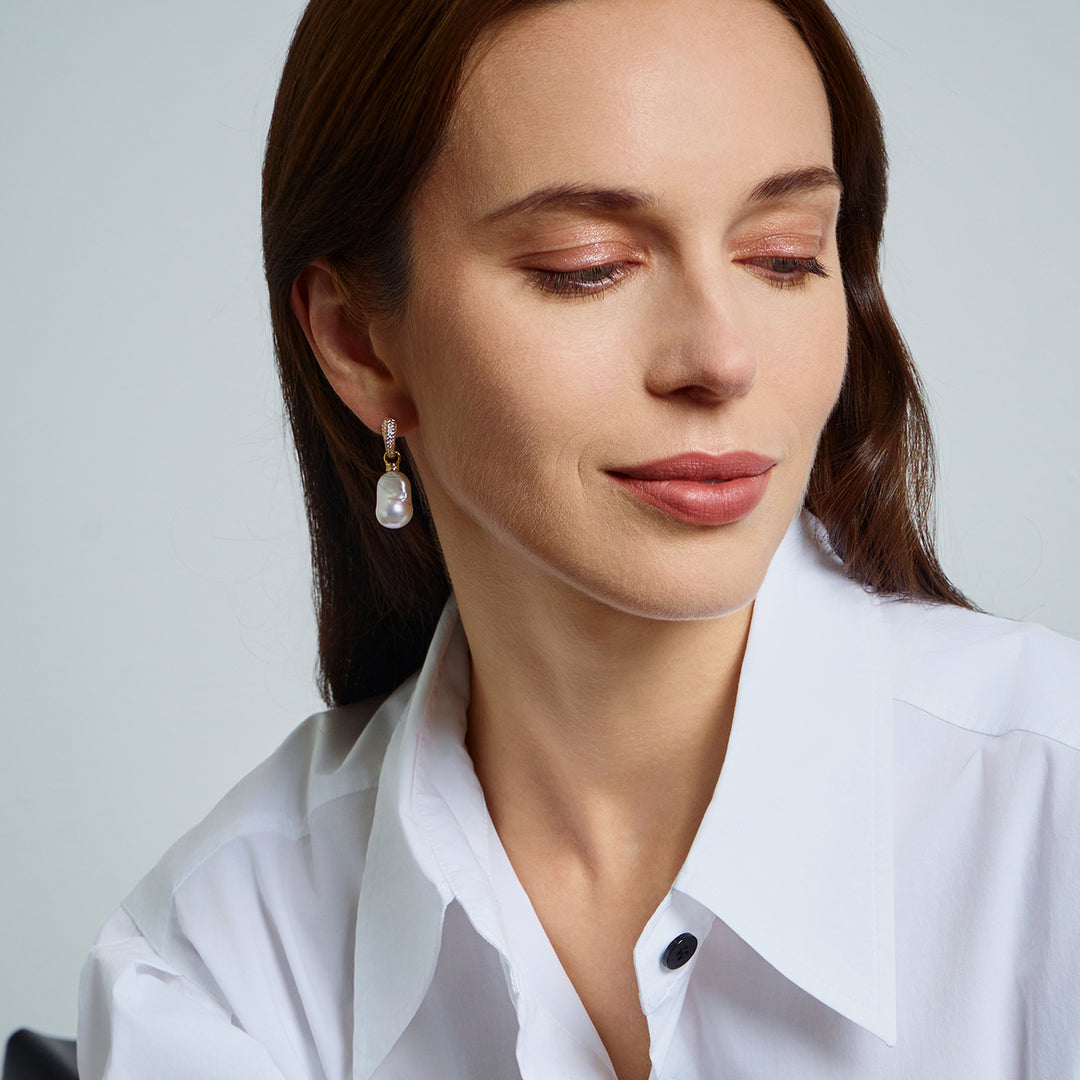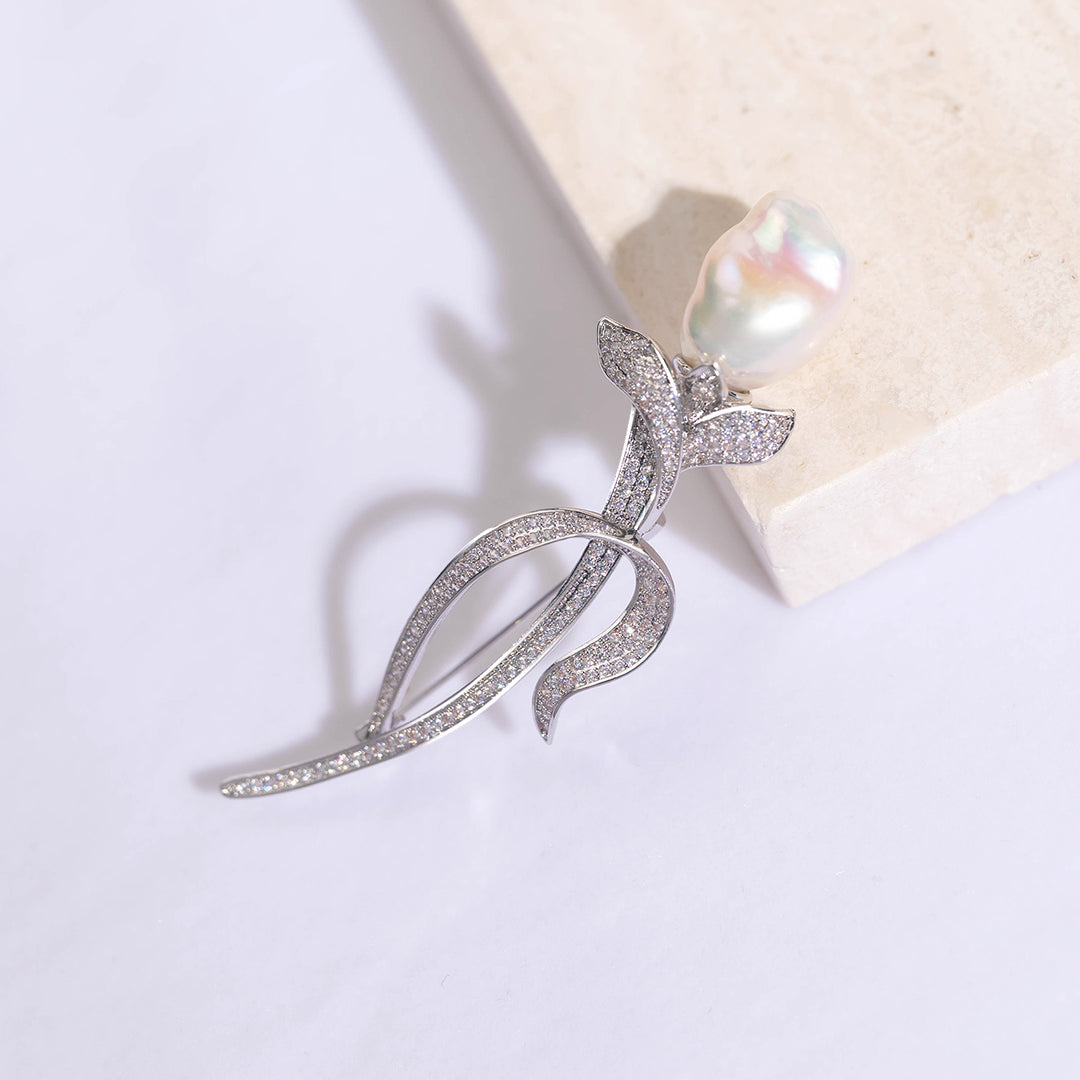SOLITAIRE MAGAZINE
Pearls Reimagined: 2025’s Bold New Take on an Age-Old Gem
Text By: Young Lim
Abstract from SOLITAIRE | 01 AUG 2025
Pearls aren’t just for the social elites or old-school anymore. In 2025, they’re bold, baroque, and breaking all the rules with fresh colours, gender-neutral designs, and a new focus on sustainability.
The Pearl Revival: What’s Fueling the Comeback?
Pearls are enjoying a cultural renaissance. Once typecast as prim, proper, and predictable, the gem is now being embraced by a new generation of wearers for precisely the opposite reasons: its softness, subtlety, and singularity.
“Younger consumers are drawn to the duality of pearls blending heritage and rebellion,” says Caroline Cao, general manager of Singapore-based brand Pearly Lustre. “They’re not loud or flashy. Instead, they exude quiet elegance with depth and meaning.”
In a world of mass production and fast fashion, pearls stand out for their natural individuality. They are one of the few gems formed by living organisms, shaped by time, care, and environment. No two are ever identical and that’s precisely their appeal.
Why Baroque Pearls Are Stealing the Spotlight
For decades, roundness was the ultimate marker of a pearl’s worth. A flawless, symmetrical orb represented rarity and refinement, which is why saltwater pearls like Japanese Akoyas became synonymous with luxury.
But 2025 marks a definitive shift in perspective. Baroque pearls, the irregular, free-form siblings of their spherical counterparts, have moved from the margins to the main event.
“They embrace imperfection as beauty,” says Cao. “They have an emotional depth and an organic presence that resonates with today’s tastes.”
Gemstone Pairings and a Shift from White to Hue
White pearls will always be timeless, but in 2025, they’re no longer the only game in town. From champagne tones and silver-greys to blush pinks and moody charcoals, today’s pearl lovers are embracing the full spectrum.
“Each pearl has its own overtone, ranging from rose and gold to silver and even green,” explains Cao. “It’s this natural variation that gives pearls their emotional pull and expressive edge.”
Tahitian pearls, in particular, are enjoying a resurgence. Known for their dark, enigmatic hues that range from deep green to peacock blue and aubergine, these pearls bring a bold, modern edge to jewellery design.
Designers are also pairing pearls with coloured gemstones such as blue topaz, pink tourmaline, and green quartz to create eye-catching contrasts. Pearly Lustre’s Harmony Collection exemplifies this aesthetic, offering fresh combinations that feel vibrant and full of character.
Rise of Gender-Neutral Pearl Design
“Pearls today are about identity and confidence, not gender,” says Cao.
The Line Between Freshwater and Saltwater Pearls Is Blurring
Historically, saltwater pearls such as Akoya, Tahitian, and South Sea varieties were considered more valuable due to their lustre, roundness, and rarity. Freshwater pearls, often farmed in China, were once dismissed as the budget-friendly option, considered charming but inconsistent.
But that’s no longer the case. Thanks to improved farming methods, today’s freshwater pearls offer better shape, thicker nacre, and a variety of natural hues.
“Freshwater pearls allow for more design freedom,” Cao believes, “They’re expressive, accessible, and well-suited to the direction jewellery is taking.”
Luxury Within Reach – Why Pearls Are More Affordable Than You Think
Despite their elegant reputation, pearls have become one of the most accessible gemstones today. This is especially true for freshwater pearls, which are now widely available in sophisticated designs at transparent prices.
“Pearls offer tremendous value for their natural beauty,” says Cao, “Even high-quality pieces can be attainable thanks to better farming and direct sourcing.”
Sustainability in Pearl Farming
Few gemstones are as closely tied to the environment as pearls. Formed within mollusks that live in the ocean, pearls are deeply dependent on the health of marine ecosystems. Any disruption, whether it’s pollution, rising sea temperatures, or overfarming, can stress the oysters and compromise both the yield and the quality of the pearls they produce.
As sustainability becomes a growing concern among consumers, the pearl industry is gradually moving toward more environmentally responsible practices. This shift is not merely a response to market pressure; it’s a necessity for long-term survival.
“We work only with pearl farms that prioritise low-impact practices,” says Caroline Cao of Pearly Lustre, “That includes maintaining healthy stocking densities, allowing mollusks the space to grow naturally, and ensuring that water conditions are clean and carefully monitored.”
Low-impact pearl farming is characterised by a holistic approach to environmental balance. Farms committed to these principles are typically located away from fragile reef ecosystems and are run in a way that avoids placing stress on the surrounding marine life. Rather than relying on intensive, high-density operations, these farms allow oysters more room to grow, which reduces waste accumulation and helps prevent disease outbreaks. Chemical use is also minimised, with many farms turning to manual cleaning methods to maintain cleanliness without introducing pollutants.
Where Pearls Go From Here
What’s next for the world’s most natural gem? Expect more design experimentation, from modular pieces and gemstone pairings to wellness-inspired collections rooted in pearls’ symbolic qualities. In traditional Chinese medicine, pearls are said to calm the spirit and cool the body, a connection that modern wearers may find especially relevant, thanks to the growing interest for holistic healing and alternative remedies.







